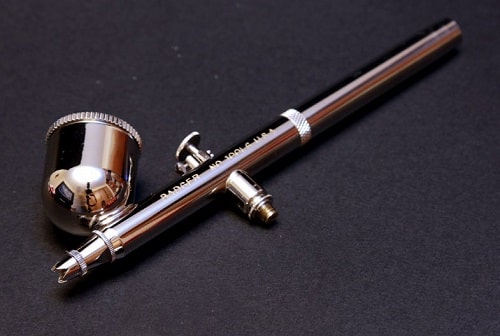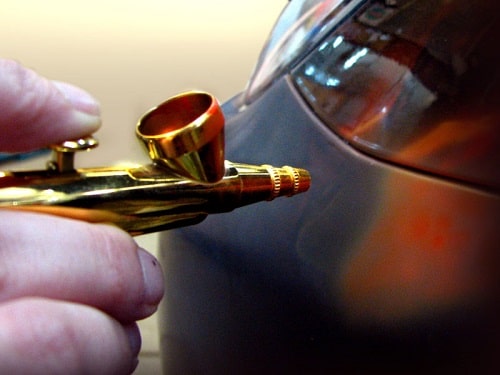 Airbrushing methods
Airbrushing methods
First of all, there are many uses for airbrushing : painting with an airbrush is often found in many disciplines that have developed techniques for using an airbrush, not just in the field of customization body paint. :
Not to mention model making and the world of miniature or merry-go-round decoration, we find aero in make-up, bodypainting or body painting, artificial tanning, baking to decorate cakes, and even retouching photo (even if today computing has the upper hand), the restoration of works of art.
Techniques for using an airbrush
The first is the freehand airbrush. It is also the most difficult. It requires perfect control of movement, great stability, adjustment of the distance to the support and the speed of movement, without ever being able to touch the support because you are painting from a distance; that's the whole difficulty.
So we use the other hand as support. To learn any of the techniques for using an airbrush, it is necessary to know how to handle the basics: we train traditionally by making a series of points and lines.
Adhesive masking with airbrush
What is masking ? In the world of airbrushing, it is a question of applying to the surface, during the phase before painting, adhesives which serve to reserve and protect certain areas while leaving other areas uncovered.
There are adhesive lines, or even transparent adhesive films in which you cut with a very precise scalpel. After a few coats of airbrush paint, the masking is immediately removed.
It's a kind of stencil, but made with great precision. Masking techniques can be very complex, with multiple superimposed layers.
 Paint portraits, or airbrush animals
Paint portraits, or airbrush animals
Did you know that anyone can paint a portrait with stunning realism, without necessarily having a talent for drawing ?
The technique consists of using images on computers, tracing them with film. It is simply necessary to locate the contours, the limits and the landmarks (corners of the mouth, nose, eyes, eyebrows). Then, transfer them to the support, discreetly marking them with a thin layer of paint.
We can partially use masking, but the rest of the painting will be done freehand, with a little application and thanks to the great potentials specific to the airbrush to make beautiful gradations, one obtains paintings resembling photos.



















































































